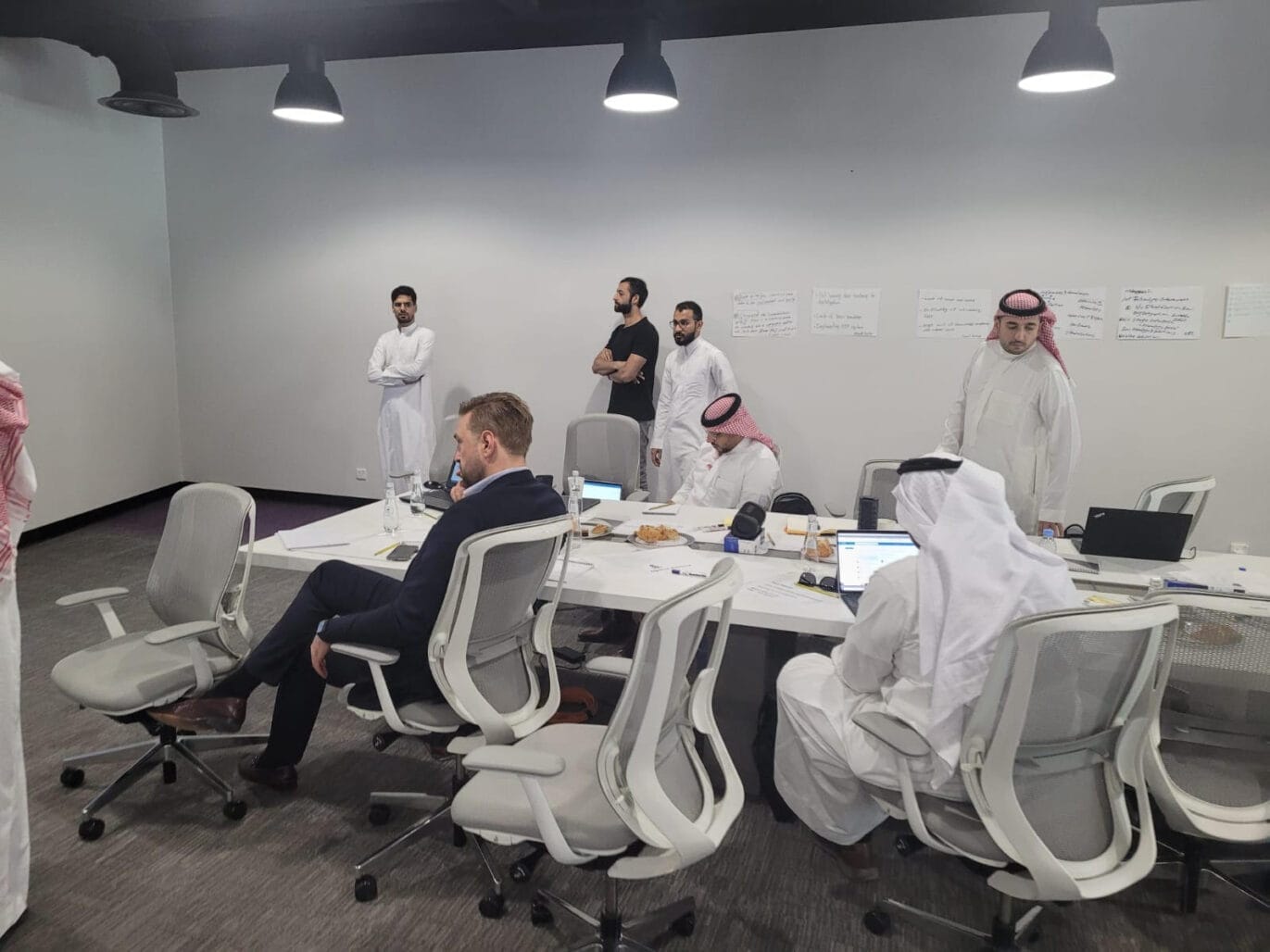The cloud is here, so what happens next?
Cloud computing has evolved as a disruptive innovation to traditional computing and is fast becoming the new normal. In October 2020, Saudi Arabia’s Ministry of Communications and Information Technology published KSA’s Cloud First Policy to accelerate the adoption of cloud computing services. This policy directs governmental entities to consider cloud options when making new IT investment decisions. The private sector was encouraged to follow the same exercise by creating an internal cloud-first Policy. The policy was defined in line with the key pillars of KSA’s ambitious Vision 2030.
What may be less clear, is how you create that could-first strategy.
What is a cloud-first approach?
Cloud computing is defined by National Institute of Standards and Technology (NIST) as a model for enabling convenient, on-demand network access to a shared pool of configurable computing resources (e.g., networks, servers, storage, applications, and services) that can be rapidly provisioned and released with minimal management effort or service provider interaction. This cloud model is composed of five essential characteristics: On-demand self-service, Broad Network Access, Resource Pooling, Rapid Elasticity, and Measured Service.
For organizations in the public and private sectors, adopting this model has numerous benefits. It enables them to:
- Scale up or down based on usage
- Drive business agility and adapt quickly
- Accelerate innovation and time-to-market with self-service on-demand provisioning of computing resources
- Reduce the total cost of ownership by trading fixed expenses for variable expenses with a pay-as-you-go model
- Generate new cloud-based business models for business success and scalability
What about regulatory challenges?
Personal data protection law and cyber security legislation and regulations are impacting cloud adoption in heavily regulated sectors. Demands for local data centers have increased to address compliance and data residency challenges. Bringing data centers closer to the user also reduces the distance in which the data has to travel which significantly reduces latency and thus increases quality and customer satisfaction.
To date, there are 22 registered cloud service providers in Saudi Arabia, according to the Communications and Information Technology Commission. Nine more cloud service providers are under the qualification process. The region is also witnessing increasing penetration of leading global hyperscale cloud providers including AWS in Bahrain, Azure in Emirates, Google Cloud in Qatar and recently announced in Saudi Arabia by 2023. Google will deploy and operate the cloud region in Saudi Arabia with its local strategic reseller and distributor, CNTXT.
What is a cloud adoption framework?
All the leading cloud service providers offer an adoption framework to guide organizations through their cloud adoption journey and mitigate possible risks. These frameworks offer a baseline to start with when migrating to the cloud, using a standardized approach with actionable, best-practice-based instructions and clear and customizable documentation for each step of the journey.
Google, for example, offers a cloud adoption framework designed to build a structure on the rubric of people, technology, and processes. The framework provides an assessment of where you are in your cloud adoption journey and actionable programs that get you to where you want to be.
How can Google’s framework guide your cloud adoption?
The Google Cloud Adoption Framework takes a dynamic approach to help organizations navigate their cloud adoption journey. This framework operates around four themes and three phases, allowing organizations to measure their cloud maturity level by examining each theme within the context of the three phases. The four themes are:
- Learn— assesses the quality and scale of the learning programs in place to upskill technical teams. By understanding their state of readiness, organizations can determine if the current knowledge and skills can support a move to the cloud or whether they need to augment their IT staff with experienced partners to bridge experience and knowledge gaps.
- Lead— assesses the extent to which IT teams are supported by a mandate from leadership to migrate to cloud, and the degree to which the teams themselves are cross-functional, collaborative, and self-motivated.
- Scale— assesses the extent to which the organization already uses cloud-native services that reduce operational overhead and automate manual processes and policies.
- Secure— assesses the ability of organizations to protect their services from unauthorized and inappropriate access with a multilayered, identity-centric security model. It also depends on the advanced maturity of the above three themes and the security controls and strategies the organizations have in place.
For each of the above four themes, the assessed business practices will fall into one of the following three phases:
- Tactical— during this phase, individual workloads are in place, but the organization has no coherent plan encompassing all of them with a strategy for building out into the future. The organization’s primary focus is reducing the cost of discrete systems to get quick return on investment and on getting to the cloud with minimal disruption with no provision for scale.
- Strategic— during this phase, the organization has broader vision and strategy that govern individual workloads. The organization focuses mainly on future needs and scale and has an effective and efficient processes and IT team.
- Transformational— in this phase the organization has well-run cloud operations functioning smoothly and the whole organization is being transformed. The organization focuses on integrating the data and insights learned from working in the cloud to support the technological changes in the cloud. Predictive and prescriptive analytics are used utilizing Artificial Intelligence and Machine Learning. In this phase, IT is no longer a cost center, but has instead become a partner to the business.
To support organizations’ data ecosystems and enable data-driven transformation, Google also provides several data cloud products with built in AI such as BigQuery, Cloud Spanner, Looker, and Vertex AI for ML. Google Cloud is open and standards-based. It offers best-in-class integration with open source standards and APIs and supports multi-cloud and hybrid environments.
How do you measure an organization’s cloud readiness?
You can use Google Cloud’s Adoption Framework yourself to make an assessment of your organization’s readiness for the cloud. Google provides a free Cloud Maturity Assessment tool part of Google Cloud Adoption Framework to help you determine where you are on your cloud journey today, plan your progress, and mature your cloud capabilities. It does this by assessing your current business practices along the four themes – Learn, Lead, Scale and Secure – and providing recommendations on how to move from the tactical phase to the strategic and ultimately to the transformational phase of cloud maturity.
If you’d like a partner on that journey, CNTXT is here for you. Founded in 2022 and based in Saudi Arabia, CNTXT is a joint venture between Saudi Aramco and Norwegian software firm Cognite. Delivering premium cloud and digital transformation services in MENA, CNTXT’s digital offerings include Google Cloud and Cognite Data Fusion, enabling customers to achieve greater efficiency, sustainability, and profitability throughout their digital transformation journeys. To get started, talk to us today.
Related Resources
All ResourcesGet in touch
There are many ways of “doing cloud” but not all of them will future-proof your business. We can devise an approach that will. Talk to us today – you have nothing to lose but the guesswork.
Contact Us


